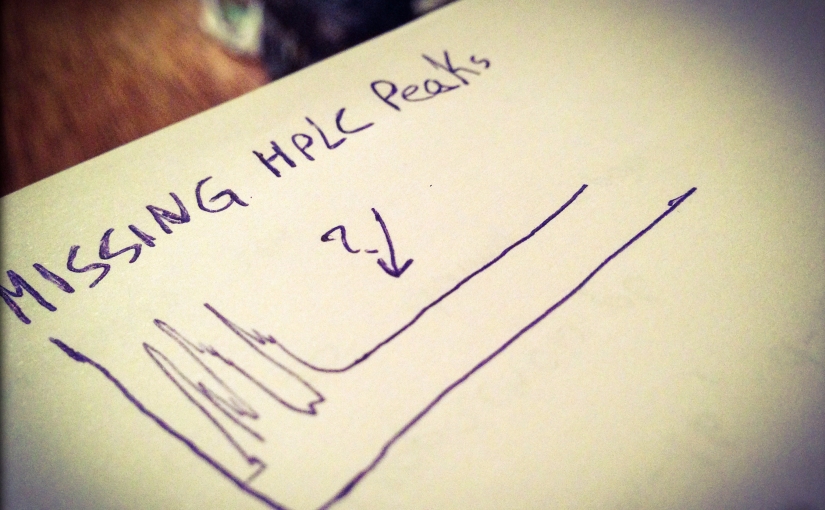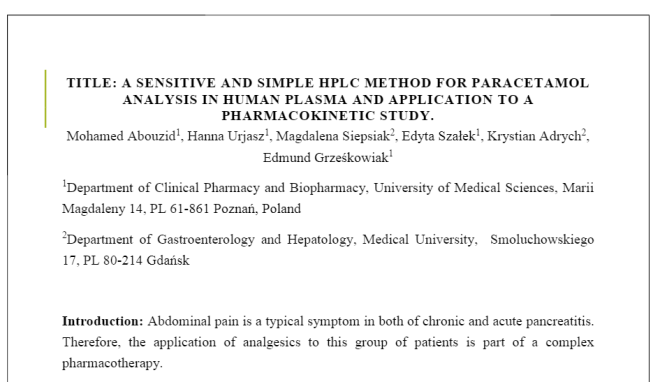Missing HPLC peaks.
You have prepared the samples, and you injected your first injection you are sitting waiting for your beautiful peaks to show up. You waited a lot, but nothing at all. Assuming you supposed to have a peak after 15 minutes and you did not get it. Just wait 15 minutes more. If nothing appears, so there might be an issue. This simple guide will assist you to overcome the issue of hidden peaks while using HPLC (High Performance Liquid Chromatography). If you are not able to solve the issue, you can contact the service provider to prevent more damages to your device. You can also inform me if you had similar or new situations and how you were able to solve it.
- Check if you injected the sample
Well, believe, or not this might be the issue. You are using many samples, and you forgot to inject the sample or to turn on the auto-injector, and you run the device. Basically, there will no peaks because there is no sample at all. So just inject your sample, and this will solve the issue.
- Check if you injected the ‘Correct sample.’
I know this might be silly, but you forgot to mark the vial, and you injected a vial of deionized water instead of your sample. Absolutely, no peaks will be found, so make sure you mark the vials regularly.
- Improper injection volume
When you are working with different devices and constantly changing injection volume you might put it ‘Zero’ or ‘.02 instead of 20’. So, you should check the injection volume through method windows in your device and check the vial itself if it has enough samples.
- Cables issue
From this stage, you have to notice the electricity cables from and to the HPLC, check if the cables are connected to the same detector especially if your HPLC has two or more UV detectors. Sometimes the cable is connected to UV1, and you are waiting for the peaks on UV2, just replace the wire from UV1 to UV2. You also have to check if you are using the proper wavelength for the detector and the lamb is turned on.
- Check flow rate and pressure
If the previous steps did not help, check the pressure. If the normal pressure supposed to be 200 bar and you noticed the pressure is much lower ’10 or 50 for example’ this means there is an issue in the flow rate, which means there might be a problem in the fluid path, injector, or column.
For the fluid path:
You must check if there is enough volume of the solvent and whether the pump is working properly and connected to the electricity. If there is no flow at all from the mobile phase bottle, you should repair the pump or replace it. <Call the technician if you have no experience>
For the injector:
Replace the sample. Usually, you can fill the vial with the solvent only to check if the pressure will be optimum or remain low. If it remains low, it means you need to leave it for a while because there might be a crystallization process due to a chemical reaction from the previous detections and the injector is blocked. You can start running the solvent for about 30 minutes or 45 minutes <depends on the viscosity or amount of crystals>, and this should solve this issue. The pressure will start to increase, and the flow rate will increase by time as a sign of better performance until being constant. If the flow rate remains very low the and the cleaning process failed, this means you have to replace the injector.
Please note, if running the solvent solved this issue that means you have to check the chemical properties of your compounds. Try to check the solubility, compatibility, change the mobile phase, filter the sample properly before the injection. If there is no other way, so you can decrease the flow rate and run a batch of your samples then run a solvent <it will consume time but it will prevent the damage of your device>.
For the column:
you need to check also if you are using the proper column <Name, size> that is suitable for you method and to ensure that you have the proper software.
You might notice a high pressure like 500 or 1000 bar in the device instead of 100 bar. Each column has its own maximum range, so if you injected the sample and you have noticed a sudden increase in the pressure, decrease the flow rate immediately and if the issue remains that mean the column is blocked. You can also run the flow rate at .2 or .1 ml/min and leave it for a while to help in dissolving the crystals.
If it did not help, if you have an experience in reverse analysis try to perform this step at the lowest possible rate. <NOTE: this could be the last resort or solution if you are not quite sure please check the previous steps. This method might destroy the column>
Mohamed Abouzid








